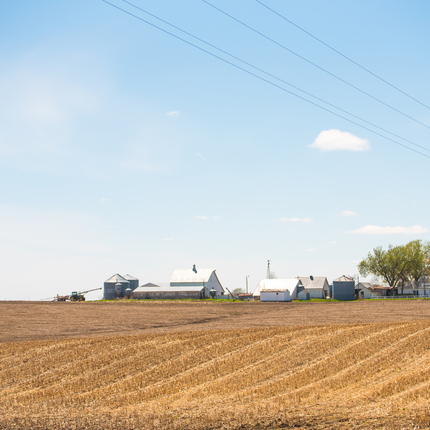The most recent farm bill establishes a roadmap for the cultivation of industrial hemp. Congress was right to loosen the restriction on growing this crop, a non-psychoactive relative of marijuana.
Each state now has the opportunity to establish a regulatory framework under which industrial hemp may be cultivated. If a state does not act, the U.S. Department of Agriculture will develop a uniform framework that will be applied in the state. The Center for Rural Affairs supports a bill working its way through the Nebraska Legislature to establish the framework in our home state.
What will these changes mean for family-scale farms?
Many family farm advocates lift up industrial hemp as a crop with the potential to improve farm profitability. However, we are concerned that as the crop shows profitability, it is prone to rapid consolidation in production.
Industrial hemp is an undifferentiated commodity. Undifferentiated commodities lend themselves to being cultivated on a large scale. Once legal to grow, industrial hemp is likely to be cultivated on a large scale, pushing down already modest per acre profit margins.
This will limit the benefit the new crop can offer small and medium size producers.
To guard against this trend, small and medium scale farmers interested in growing industrial hemp should look for ways to differentiate their crop from the outset. Niche or identity-preserved market opportunities are more likely to provide lasting opportunity for smaller growers, just as organic grain or grass-fed beef has done for other midscale growers.
There are some other factors to consider as well.
Industrial hemp has similar fertility and soil needs as corn. It grows best on well-drained soil with ample fertilization. It is a closely-planted crop like small grains, so erosion would be reduced during the growing season, but far less residue is left on the field after harvest, so risk of erosion in the off-season may be increased. Early adopters will essentially be doing their own variety, plant density, and fertility trials as existing university research is limited.
The crop is also currently ineligible for federal crop insurance, shifting greater risk to growers. Whole Farm Revenue Protection, promoted by the Center for Rural Affairs, is one avenue for coverage.
Finally, if communities are able to keep processing and manufacturing close to home and under local ownership, rural communities could benefit from new processing jobs. Maintaining local ownership could prove difficult, though, as with the trend in ethanol production that has resulted in almost no remaining local ownership.
Those interested in industrial hemp and interested in family farm viability must work to create lasting opportunity. Without active intervention, the crop by itself is likely to do little to change the profitability of small farms or the structure of agriculture.





